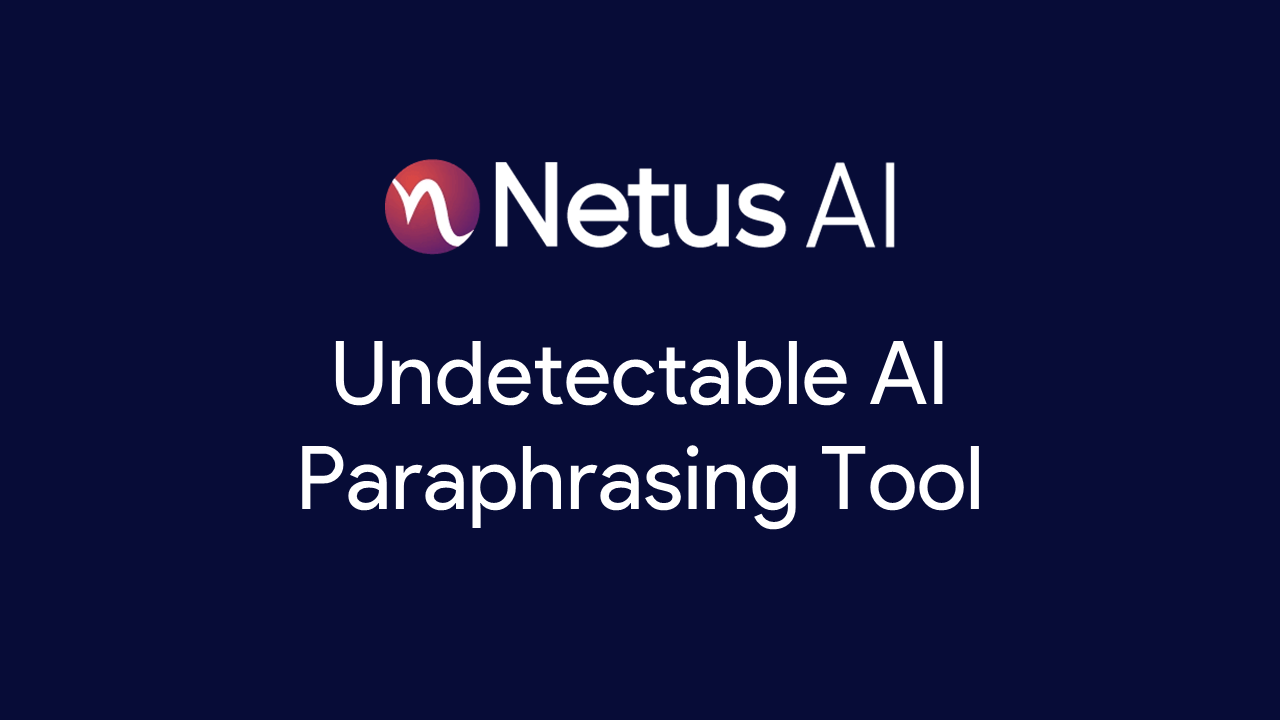NetusAI
NetusAI
Blog Article

Understanding the Accuracy of GPTZero in Detecting AI-Generated Text
In the rapidly evolving world of content creation, AI-driven tools like NetusAI have become invaluable. NetusAI is designed to help content creators produce unique and high-quality content quickly by transforming AI-generated text into human-like writing. This tool offers various features tailored to different content needs, including an AI bypasser to avoid detection and an AI detector that distinguishes between human-written and AI-generated text with high accuracy. Meanwhile, the effectiveness of AI detection systems like GPTZero is critical for maintaining content integrity.
How Does GPTZero Work?
Understanding how does GPT Zero work is essential for evaluating its effectiveness. GPTZero uses two primary metrics to detect AI-generated text: perplexity and burstiness. Perplexity measures the predictability of the text, with AI-generated content typically being more predictable than human-written content. Burstiness, on the other hand, examines the variation in sentence structure, which tends to be more varied in human writing. By analyzing these metrics, GPTZero aims to differentiate between human and AI-generated text, providing a useful tool for educators, writers, and editors.
Analyzing GPTZero Accuracy
A critical aspect of any AI detection tool is its accuracy. GPT Zero accuracy has been a focal point in discussions about its effectiveness. According to the Netus.ai blog, GPTZero performs well with longer texts, where the patterns of perplexity and burstiness are more pronounced. However, it struggles with shorter pieces, often leading to misclassifications. This limitation raises important questions about its reliability for various types of content.
Challenges in Detecting AI-Generated Content
AI-generated content presents unique challenges for detection tools like GPTZero. While the tool's analysis of perplexity and burstiness works effectively for longer texts, shorter texts often lack the necessary complexity, making accurate detection more difficult. This discrepancy in performance highlights a significant challenge in maintaining consistent detection accuracy across different content lengths. Therefore, understanding how does GPT Zero work and its limitations is crucial for users.
Practical Implications for Educators and Content Creators
For educators and content creators, the reliability of detection tools like GPTZero is paramount. In academic settings, ensuring the authenticity of student work is essential. Similarly, content creators need to verify the originality of their work to avoid plagiarism. Given GPTZero's mixed results, particularly with shorter texts, users must be cautious and consider additional verification methods to ensure content integrity. The question of GPT Zero accuracy becomes particularly relevant in these contexts.
Comparing GPTZero with Other Detection Tools
When evaluating the accuracy of AI detection tools, it is helpful to compare their performance against others. GPTZero's focus on perplexity and burstiness offers a specific approach, but its limitations with shorter texts suggest that other tools might be more reliable. For instance, alternatives like Originality.ai, as mentioned in the Netus.ai blog, may provide more consistent results across various text lengths, offering a broader scope of detection capabilities.
The Role of Advanced Algorithms
Advanced algorithms are the backbone of AI detection tools like GPTZero. These algorithms must continuously evolve to keep up with the sophistication of AI-generated content. The performance issues GPTZero faces with shorter texts indicate that there is significant room for improvement in its algorithmic approach. Ongoing development and refinement are necessary to enhance accuracy and reliability, ensuring that detection tools can adapt to new challenges.
Exploring Alternatives to GPTZero
Given the mixed performance of GPTZero, exploring other detection tools might be beneficial. Tools like Originality.ai could offer better accuracy and reliability, especially for shorter texts. By comparing different tools, users can identify the most effective solutions for their specific needs, ensuring that their content remains original and authentic.
Conclusion
The question of how does GPT Zero work and its effectiveness in detecting AI-generated content is crucial for maintaining content integrity. While GPTZero offers valuable insights and performs well with longer texts, its limitations with shorter pieces highlight the need for continuous improvement. Understanding these dynamics is essential for educators, writers, and editors who must navigate the complexities of AI-generated content. As detection tools evolve, their accuracy and reliability will determine their effectiveness in ensuring content authenticity and originality. By exploring alternative detection tools and staying informed about the latest advancements, users can better manage the challenges posed by AI-generated content.
Report this page